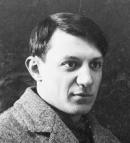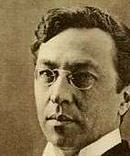
Franz Marc
German painter
Franz Marc Rank
About Franz Marc
Franz Marc was a German painter whose paintings usually reflected German Expressionism. Franz was one of the founding fathers of Der Blaue Reiter.
His artwork usually reflected animals and bright natural scenes.
Background
Franz Marc grew up in Munich, the capital of Bavaria during the early '80s. His father was Wilhelm Marc and his mother was Sophie Marc, Wilhelm was also a painter, a profession Franz is believed to have inherited from him. Sophie was however a housewife and firm believer of Calvinism.
Franz went to Munich University, where he studied arts though he had wanted to learn theology like his brother.
Career Highlights
In 1910, Marc painted a naked human figure with a cat and grazing Horses, and showcased his works in the second exhibition of the New Artists' Association, at the Thannhauser Galleries in Munich.
In 1911, Marc founded the Der Blaue Reiter journal, a piece of artwork that reflected German philosophies and later became the center of the artist circle, along with other artists who had dismissed themselves from the then Neue Künstlervereinigung movement.
In 1930, the N--is declared Franz an artist whose work had lost its influence and quality. This backlash was further described as a way to suppress the influence of modern art, an ideology the German N--is strongly uphold.
Despite these setbacks, Franz saw many of his artwork surviving during and after the second world war, shooting up his work to legendary status and as a result maintaining his legacy as the greatest artist of his time. His work is now exhibited in art galleries and museums across Europe.
His works over the years have attracted great sales and in effect affluent buyers.
His artwork "Grazing Horses III'' attracted an amount of £12,340,500 at its auction.
An Army officer
Aside from being a great painter, Franz contributed immensely to the German army. During the First World War in 1914, he joined the Imperial German Army where he served as a cavalryman. He was later promoted to military camouflage.
Monuments and Honors
Franz's home in Munich is captured by a historical plaque of him and his works.
The Franz Marc Museum, situated in Kochel am See, has been set apart to extol Franz's work and legacy. This building has in it many of his paintings, and also works by renowned artists.
In October 1998, several of Marc's paintings were accumulated and sold at Christie's art auction house in London. These art pieces included works such as "Rote Rehe", sold at 3.3 million dollars and "Der Wasserfall'' which was also auctioned and sold at 5.06 million dollars.
Death
A restaffing and restructuring of the German army occurred after the war and the German army advised that certain members be discharged from the army for security reasons, a decision that affected Franz.
However, before news and orders of his reshuffling reached him, the German painter had already met his demise. He died after he was struck in his head by a shell splinter in the Battle of Verdun in 1916.
Franz Marc Rank
F.A.Q. about Franz Marc
When is his birthday?
Franz Marc's birthday is on February 8, 1880.
In how many days is his birthday?
Franz's birthday is in 350 days
How old was Franz when he died?
He was 36 years old.
When did he die?
He died in March 4, 1916.
How old would he be today?
Franz Marc would be 145 years old if he was alive today.
Where was Franz from?
He was born in Munich.




